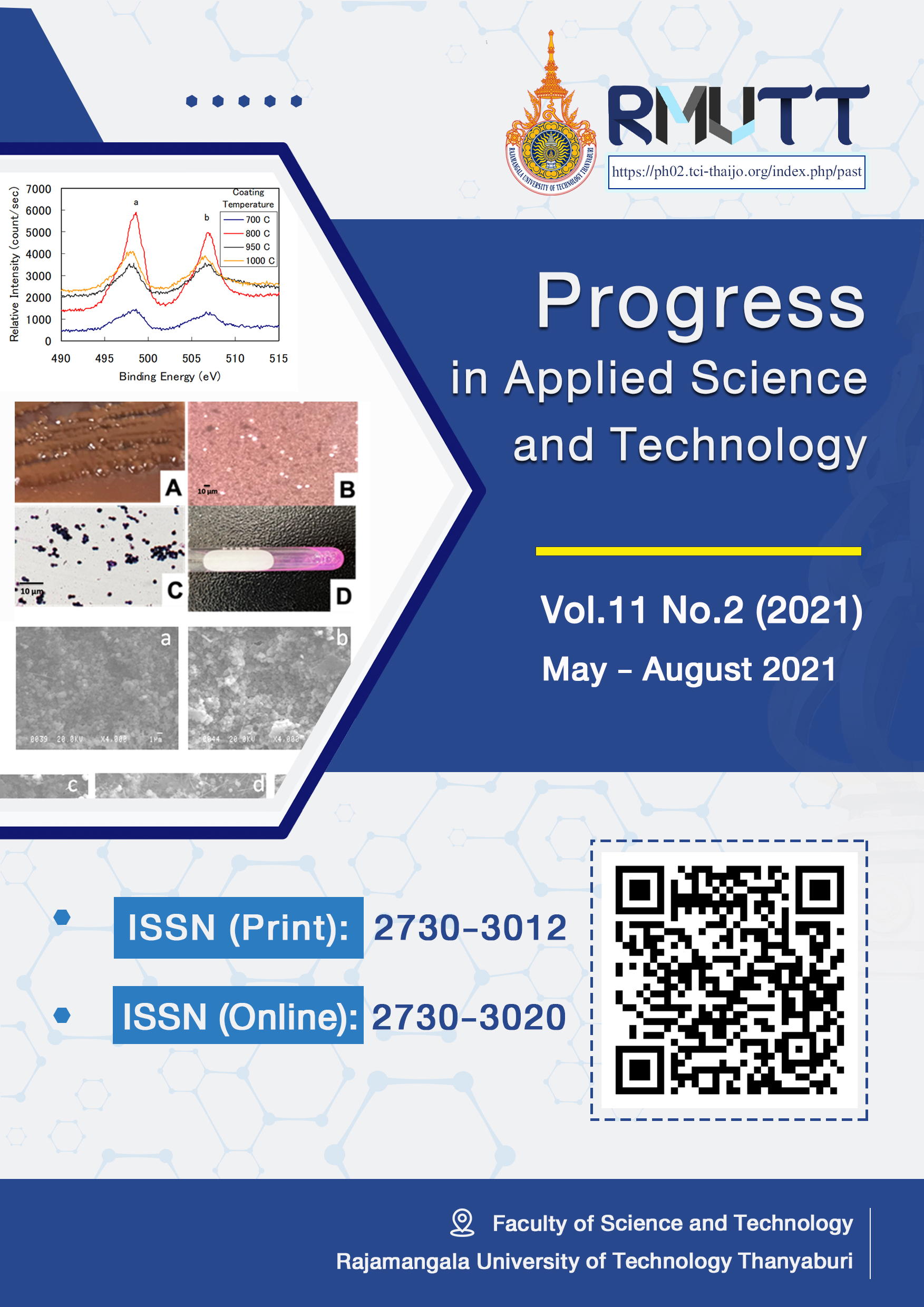SnO2 Coatings on Porous LiAl5O8 by Simple Thermal Evaporation Process
Main Article Content
Abstract
Thermal evaporation process has special practical advantages of being technologically simple and being able to carry out with a low cost, which could be applied especially in technologically-under-developing countries. Tin powder was filled in an alumina crucible by volumetric ratios of Sn to Air as 0.17. The porous LiAl5O8 prepared by the reaction bonded sintering was set above the tin powder by 5 mm. Temperatures at 700°C, 800°C, 900°C, 950°C and 1000°C were selected for the evaporation process of tin powder to coat on the porous LiAl5O8 substrate for 6 hours. The coating temperature of 950°C showed a high deposition rate. The SnO2 did not cover all the surface of LiAl5O8. The SnO2 deposited on LiAl5O8 looks like islands pattern. The electrical conductivity measurement showed the present SnO2/LiAl5O8 material system had the electrical conductivity similar to that of the porous LiAl5O8. Deposited amount of SnO2 was not large enough to affect the electrical conductivity of the system.
Article Details

This work is licensed under a Creative Commons Attribution-NonCommercial-NoDerivatives 4.0 International License.
References
Mark P, Indumini J, Dale T. Fabrication of a Novel Nanostructured SnO2/LiCoO2 Lithium-Ion Cell. MRS Advances 1, 2016, 3075–3081.
Monredon S, Cellot A, Ribot F, Armelao L, Gueneau L, Delaure L. Synthesis and characterization of crystalline tin oxidenanoparticles J Mater Chem. 12. 2002 2369-2400.
Satya B, Ekta S, Utkarsh K. Synthesis and Characterization of Nickel Doped Tin Oxide Nanoparticles by Hydrothermal Method, Nanoscience and Nanotechnology Research. 2017, Vol. 4 No. 3, 115-119.
Correa-Lozano B, Comminellis C, Battisti A.Physicochemical Properties of SnO2 ‐ Sb2 O 5 Films Prepared by the Spray Pyrolysis Technique J Electrochem. Soc. 1996 143-203.
A, Boulainine D, Bouanane I, Schmerber G, Boudjema B. Physical properties of SnO2 thin films prepared by isothermal oxidation of vacuum evaporated Sn J Mater Sci-Mater El. v. 28,2017, 2481–2486.
Ganhua L, Ming L, Kehan Y, Junhong C. Absorption Properties of Hybrid SnO2 Nanocrystal-Carbon Nanotube Structures, J Electron Mater. 2008 v. 37, 1686–1690.
Jin Jae P, Kuk Ki K., Madhusudan R., Jae Kyu S, Seung Min P. Characterization of SnO2 thin films grown by pulsed laser deposition under transverse magnetic field, Rapid Communication in Photoscience v.3 issue 4, 2015. 50-53.
Boulainine D, Kabir A, Bouanane B, Boudjema B, Schmerber G. Oxidation Temperature Dependence of the Structural, Optical and Electrical Properties of SnO2 Thin Films J Electron Mater. 2016 v. 45, 4357–4363
Striyhal S, Pavlık J, Novaka S, Mackova A, Perina V, Veltrusk K. Investigations of SnO2 thin films preparedby plasma oxidation, Vacuum 67 (2002) 665–671.
Azonano, Tin oxide (SnO2) Nanoparticle-Properties Application,2 July 2013, URL: https://www.azonano.com/article.aspx?ArticleID=3381.
Fang L, Xiaobo J, Yingchang Y, Wentao D and Craig E. B. Room temperature ionic liquid assisted well-dispersed core-shell tin nanoparticles through cathodic corrosion, RSC Adv. 3 (2013) 18791.






